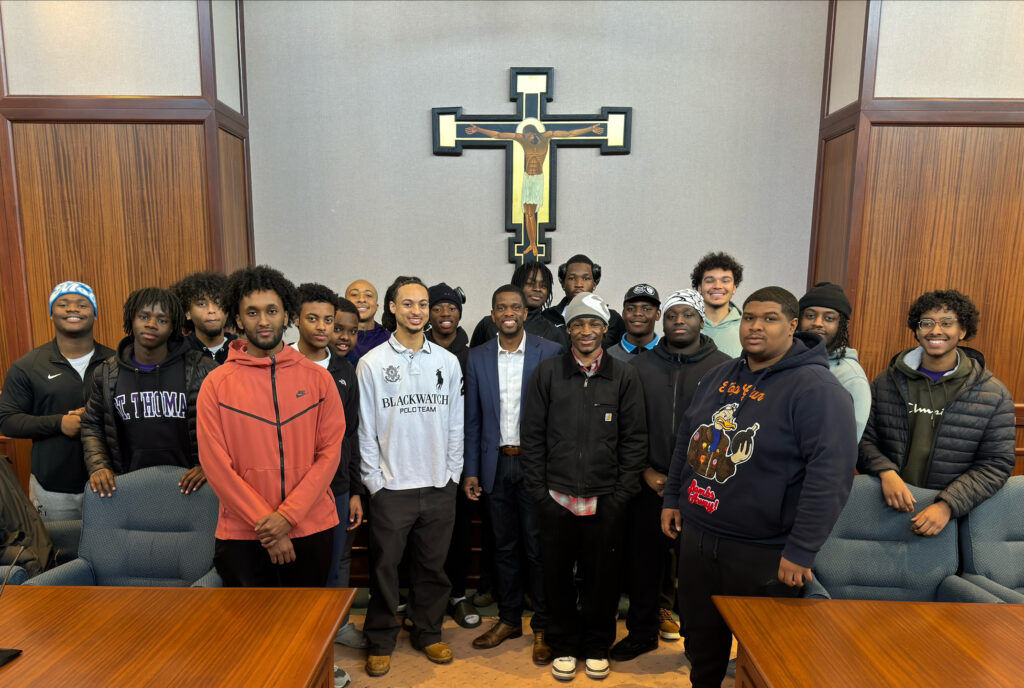New Hibernia Review's spring issue available online
By Jim Rogers
Editor, New Hibernia Review
New Hibernia Review, the quarterly journal published by the University of St. Thomas Center for Irish Studies, is available online.
The journal's most recent issue (winter, Vol. 11, No. 1) and all issues since 2000 can be found at the Project Muse Web site. This Web site offers searchable, full-text issues of the St. Thomas-based journal.
Also, note that subscriptions to New Hibernia Review can be given as St. Patrick’s Day gifts.
Here's a brief look at the contents of the most recent issue:
- The issue opens with a look at the prairie town of O’Neill, Neb., which boasts that it is the "Irish Capital" of the state. Anthropologist Brigittine French of Grinnell College looks at the many ways Irish identity has evolved in this small community over the past 130 years.
- Next, we consider Seamus Deane's 1996 bestseller Reading in the Dark. Daniel W. Ross, of Columbus State University in Georgia, finds that the Northern Irish Catholics in this novel (all obsessed with secrecy) are living out classical myths about the emotional costs of searching for truth.
- Then, poet Mark Roper of County Kilkenny presents eight new poems that gracefully attend to both the beauty of the observed world and to the tincture of spiritual mystery that fills nature.
- Andrew Wilson of Loyola University-Chicago explores a little-known chapter in the history of the Ulster conflict – the botched attempts by Northern Irish loyalists to rally support in North America, efforts that only increased suspicion in the dark days of the Irish Hunger Strikes.
- Irish geopolitics then enters our pages as Neal Jesse of Bowling Green State University looks at Ireland's unusual brand of neutrality, which is much different from the foreign policy of other neutrals – not least because Ireland is, realistically, unarmed.
- Once a year, New Hibernia Review presents a feature article in the Irish language. In this issue, it is a biographical study of Seán Ó Dálaigh, a 19th-century publisher of scholarly texts, in Gaelic. The author, Proinsias Ó Drisceoil, is the brother of last year's O'Shaughnessy Poetry Award honoree.
- A century ago, Irish legends were at risk of being lost, inspiring the aristocrat Lady Gregory to collect many versions of the traditional lore in her classic Cuchulain of Muirthemne (1907). Today's readers often find Gregory's book a bit prissy – but Karen Golighly of Southern Illinois University-Carbondale argues that she was actually a superb editor.
- Last winter, Galway's famous Kennys Books closed its shop in the city and moved all of its sales operations to the Internet. Three literary figures: Gerald Dawe of Trinity College Dublin, bookseller Gregory Carr of "Read Ireland" and poet Mary O'Malley, ruminate on what Kennys' closing meant to the community, in short, "Letters for Ireland " that range from elegy to outrage.
- Finally, writing from Hungary, Maria Kurdi of the University of Pécs offers a roundup of the unexpected vitality of Irish Studies in the former Soviet bloc nation. She points out that as small nations, both Ireland and Hungary have long histories of struggling to make their voices heard in the wider world.
For more information, including subscription information, please contact the Center for Irish Studies, (651) 962-5662, or Mail 5008, or e-mail Jim Rogers. Visit the center's Web site for additional information.






